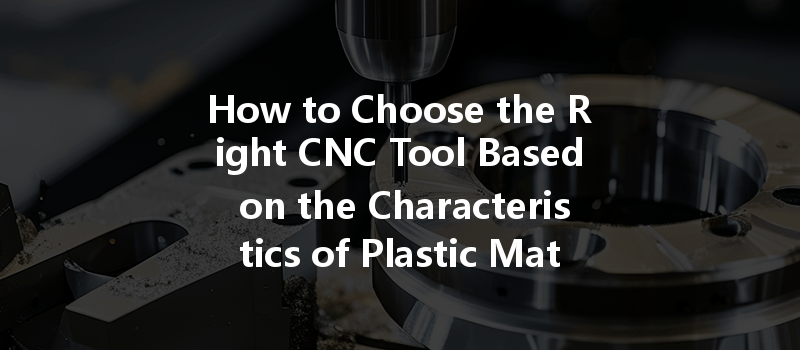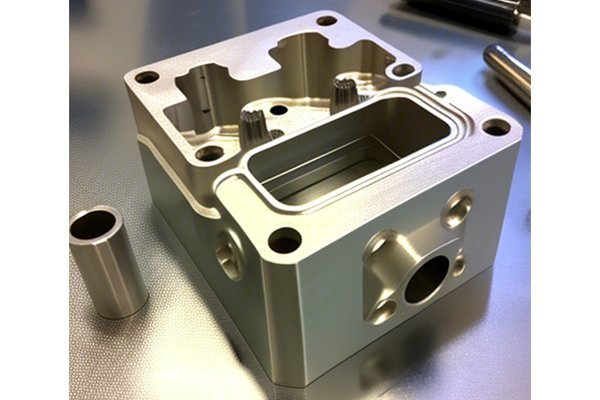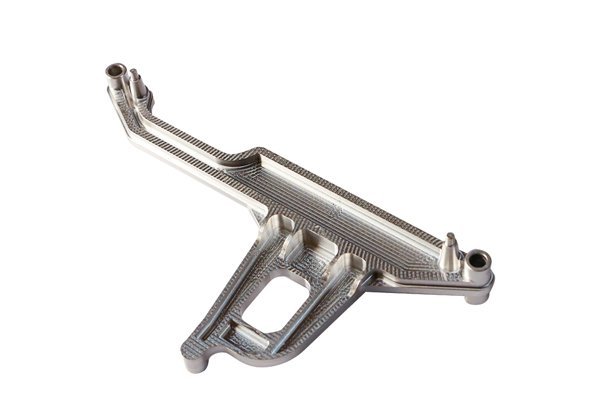Did you know that the global market for plastic materials is expected to surpass $650 billion by 2024? With such a staggering number, it’s clear that plastic has become a crucial material in various industries, ranging from automotive to aerospace, consumer goods, and medical devices. At the heart of manufacturing plastic parts is CNC (Computer Numerical Control) machining, a method that offers precision and efficiency. However, choosing the right CNC tool for machining plastic can be a daunting task, particularly given the wide variety of plastic materials, each with unique characteristics.
In this comprehensive guide, we will explore how to effectively choose the right CNC tool based on different plastic characteristics. We will delve into the intricacies of various types of plastics, their mechanical properties, and the corresponding CNC tools that can optimize machining processes. Whether you are a seasoned machinist or a newcomer to the field, this guide will arm you with the knowledge necessary to enhance your CNC machining operations.
Understanding Plastic Materials
Before we dive into tooling, let’s first understand the various types of plastics currently in use. Plastics can be broadly categorized into two types: thermoplastics and thermosetting plastics.
Thermoplastics
Thermoplastics are materials that become pliable or moldable upon heating and solidify when cooled. They can be remolded and recycled multiple times. Some common examples include:
Thermosetting Plastics
Thermosetting plastics, on the other hand, become irreversibly hardened upon heating. They do not melt and cannot be remolded. Examples include:
Understanding which type of plastic you are working with is essential, as it directly affects the CNC tooling choices available.
Mechanical Characteristics of Plastics
Once you’ve classified the type of plastic, you’ll need to consider the mechanical properties relevant to CNC machining. Here are some key characteristics to understand:
Plastics have different hardness levels, which affect wear on tooling. Softer plastics may require fewer robust tools, while harder plastics like PEEK (Polyetheretherketone) demand specialized tooling to avoid rapid wear.
This property indicates how much stress a material can withstand before failing. Materials with high tensile strength, such as engineering plastics, may require tools that can handle greater forces without deforming.
Different plastics also have varying melting points and thermal conductivity. High-melting point plastics may require cooling mechanisms during machining, while those with lower thermal resistance may require more finesse to avoid deformation.
Certain plastics are highly resistant to chemical agents and solvents, which should influence the type of cutters and lubricants used during machining to prevent damage to both the tool and the workpiece.
Some plastics are more tenacious than others. During machining, it’s essential to consider this property, especially for components intended to endure mechanical shocks or impacts.
Selecting the Right CNC Tool
End Mills
End mills are versatile tools for various operations, including milling, drilling, and engraving. Select end mills with:
Drill Bits

Opt for drill bits specifically engineered for plastics to reduce the risk of chipping and cracking. Look for:
Specialty Tools
Consider utilizing specialized tools designed for specific applications, such as:
The design of the tool also matters significantly:
Tool coatings play a vital role in enhancing wear resistance and improving surface finish. Here’s a look at some common coatings:
Understanding the relationship between feed rate, spindle speed, and material characteristics can help you optimize machining:
Choosing the right coolant or lubricant can drastically affect the machining process. Some plastics may require mist cooling while others benefit from dry machining. Use compatible lubricants that won’t interfere chemically with the material being machined.
Evaluate the cutting depth and step-over to optimize surface finishes, tool life, and machining time. For delicate plastics, consider lighter cuts to minimize stress.
Real-World Application Examples
Troubleshooting Common Issues
Choosing the right CNC tool based on the characteristics of plastic materials is a multi-faceted process that requires profound understanding of both the machining capabilities of the tools and the unique properties of plastics. From selecting the type of cutter to understanding tool geometry and optimizing machining parameters, each decision affects the result of your workpiece.
As the demand for high-quality plastic components continues to grow, so does the need for effective machining solutions. By considering the various characteristics of plastic materials and selecting the appropriate tools accordingly, you will enhance not only the quality of your finished products but also the efficiency of your production processes.
In an industry that is constantly evolving, staying informed and adapting your practices is vital. Remember, the dynamics of CNC machining plastic are complex but fascinating, and your investment in this knowledge will pay off in terms of improved project outcomes and satisfaction. Don’t just think about the immediate task at hand; reflect on how these insights can reinforce your future projects and drive your operations towards greater success.






